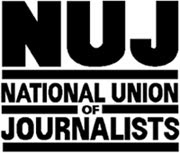Apparently the genealogy of our titles goes something like this. Most of our members work on The Press, which was founded as the Yorkshire Evening Press in 1882, and first dropped the Yorkshire and then the Evening parts of its name. The latter was ditched after the switch to overnight publishing and a round of redundancies by Newsquest in 2006.
Some of our members work on the Gazette & Herald, a weekly for Ryedale in north Yorkshire. This was formed in 1954 - originally as the Yorkshire Gazette and Herald - after the amalgamation of The Yorkshire Herald (founded 1890), pictured, and the Yorkshire Gazette (founded 1819).
The Yorkshire Herald's previous incarnation was the York Herald, which was published from 1790 to 1889. The paper's title can still be seen carved in stone on the river-facing side of York's City Screen cinema, which formed part of The Press's offices until the move to its current base in 1989.
Now that's cleared up, let's return to the strike of 1911. We turn to the excellent Journalists: 100 years of the NUJ, by Tim Gopsill and Greg Neale:
The NUJ's first strike was also its longest. It began in 1911 and went on for 11 years.
It was not about pay, but working hours: the reporters at the York Herald, a morning paper, were 'the hardest driven of all the daily papers in the country', working from 9.30am to midnight or even 2am, seven days a week. The chief reporter, Clifford Nixon, was sacked for 'misconduct' after two years of cautious NUJ attempts to alleviate the Dickensian conditions; his offence had been to suggest ways of doing this. The union-approved plan included allowing each employee one day off a week and employing two new reporters; by now so many had become ill from overwork and had left that there were only four to cover the whole of East Yorkshire. No formal NUJ chapel had been formed, but Nixon had been acting as a spokesman for the staff. He became the union's first 'martyr' and it looked after him, quickly finding him a better job in Fleet Street.
All the other reporters quit - one of them even offering the company his month's notice money to get out; it was accepted. The union then blacklisted the paper, announced that any journalist who took work there would be expelled, and went to some lengths to stop young reporters filling the vacant jobs. It was only in 1922 that the ban was lifted. Henry Richardson later wrote that the action was 'both effective and ineffective. It did not improve conditions in the office at the time but it improved them in many another bad office'.
To buy Journalists: 100 years of the NUJ, by Tim Gopsill and Greg Neale, log on to the NUJ's online shop here


